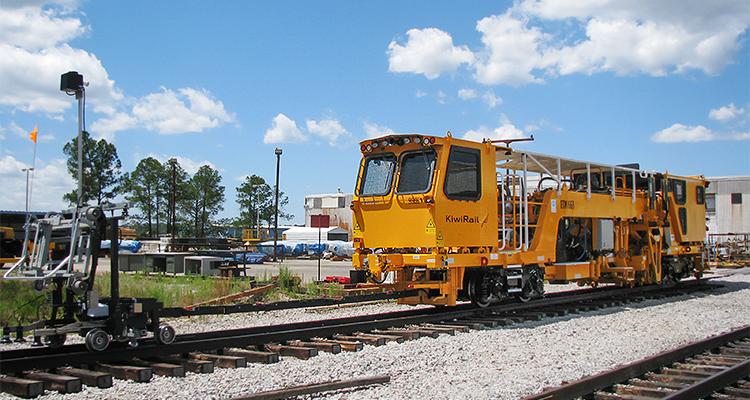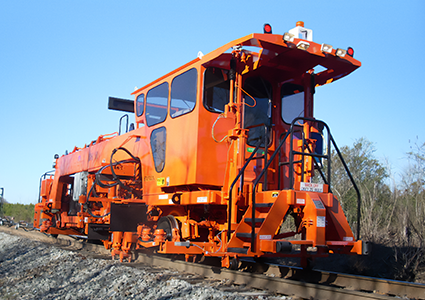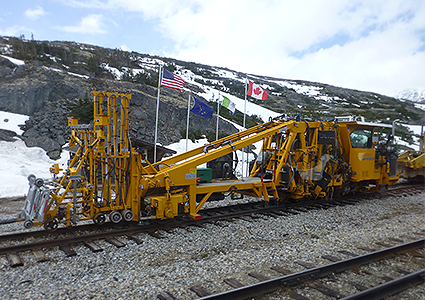
How Harsco Rail is adapting its operation to ensure continued success around the globe
Harsco Rail (Harsco) is a world-leading manufacturer of rail track maintenance and construction equipment. Bolstered by a broad range of high-quality equipment, cutting-edge technology, and the added specialism of building bespoke solutions for individual customers, Harsco meets all the demands of the track.
The company began in 1909 with the foundation of Fairmont Railway Motors. It has grown and adapted to meet market conditions and industry demands over the years, with the rail division growing into a melded collection of smaller equipment companies, like Tamper Corporation, Jackson Jordan, RTW, and Portec, supplying complementary products.
Today, Harsco is a worldwide operating segment of Enviri Corporation (Enviri), a diversified industrial company serving the metals, construction, rail, and energy industries around the world. With a renewed focus on activities in the environmental services sector, Harsco’s rebranding earlier in 2023 enables the rail division to function more like a standalone operation.
industries around the world. With a renewed focus on activities in the environmental services sector, Harsco’s rebranding earlier in 2023 enables the rail division to function more like a standalone operation.
The business is continually expanding its global presence, with nine main locations spread across the US, UK, Germany, India, Brazil, China, and Australia. It maintains a customer base of more than 125 railways, for which it provides expert engineering, innovative technology, dedicated parts and services, and quality maintenance support.
Innovative products
We sit down with Robert Schrunk, Harsco’s Chief Engineer, to discuss how the company’s innovative products are changing the nature of day-to-day workloads for those who operate and work with its products. We also touch on Harsco’s superior customer services, ongoing developments, and some of the rail sector’s emerging trends.
Yellow machines
“We focus on railway construction and maintenance of equipment, commonly referred to as ‘yellow machines’ by those in the industry,” Robert begins. “The term describes the specialized mobile equipment we produce, which ranges from small machines like tie changers, spike pullers, and spike drivers, to large, multi-car machines. Examples of our larger equipment include track renewal trains, which refurbish track in one comprehensive operation, and production rail grinders which remove defects from the entire rail head in a single pass.
“We also supply several different models of tamping machines to position the track for accurate curvature and cross-level. Our product range extends to rail gear that allows road vehicles to operate on track, as well as specialized utility vehicles used for track cleaning, measurement, catenary management, or bridge inspection. Finally, we provide track inspection services involved with problem solving and optimization of wheel and rail profiles.
“Our equipment operates on every continent that has railways,” he states. “Our customers range from Class 1 heavy haul freight railroads and dedicated mining operations to city metro systems and highspeed passenger lines. We even work with a selection of unusual rail systems like historical railways, amusement parks, and sugar cane factories.”
It comes as no surprise that Harsco boasts a strong reputation for its ability to turn broad market insight into focused solutions by developing and delivering innovative ideas to maintain track structures around the globe. However, the business particularly excels in producing specialized railway equipment that automates manual processes.
“Over time, many manual activities have been replaced by mechanical equipment, with hydraulics making mechanical systems much smaller and more flexible,” Robert recalls. “When electronic control was introduced to refine the use of hydraulic systems, it sparked a decades-long evolution. Starting as simple relay logic, electronic control evolved to programmable logic controllers, then to large, centralized computers, and finally to the distributed network systems we currently use.
 Improving customer operations
Improving customer operations
“Today, the drive for improved efficiency, reduced emissions, and avoidance of hydraulic fluid has increased the focus on utilizing electrical energy directly through electric actuators and motors,” he continues. “There is also an emphasis on systems that allow machines to operate fully autonomously using vision systems and artificial intelligence (AI) to recognize track features and perform specific tasks.”
Harsco is automating several steps in the railway maintenance process. It has deployed integrated cameras and vision systems, for instance, to develop intelligence so machines can operate independently or with minor supervision. “Automation alleviates many of the back-breaking, tedious manual jobs that once existed for railway workers,” states Robert.
“It improves the overall reliability and operational safety of railways around the world. With our broad product offering, reputation for high quality, and willingness to customize and innovate, we are uniquely positioned to provide solutions that genuinely improve our customers’ operations.
“To give you an example, when working with crossties, commonly spaced 24 inches apart and covering miles of track,” he adds. “It means the same activity might be carried out 3000 times per day. In this instance, automation can accurately and autonomously replace up to 3500 ties a day, thereby alleviating the tiresome and repetitive tasks that have historically been done by a human.”
Necessity is the mother of invention
Recognized as a world-leading developer of AI for engineering applications, Harsco has developed an innovative core technology called Intelligent Railway Infrastructure Solutions (IRIS). “In simple terms, IRIS uses neural networks to take in inputs, make decisions, and produce outputs for specific jobs,” Robert explains. “Over time, the system ‘learns’ how to recognize key information even when conditions are not optimal, such as unstable inputs or adverse weather conditions.
“The basic system can be customized and applied to a variety of applications,” he continues. “For example, IRIS might use high resolution cameras to scan the track for what it recognizes as holes in a tie plate, stop the vehicle, and control the necessary outputs to correctly position a machine to drive a spike into the hole – all without any operator input!”
Over the last 20 years, Harsco has rapidly accelerated its growth around the globe. It now occupies manufacturing sites in the US, Australia, and Europe, and works closely with GEMAC, a maintenance of way (MOW) equipment manufacturer in China. “Our largest growth region in recent years has been Asia, but activity is also growing in India, Africa, and the Middle East,” Robert reveals. “That growth trend is expected to continue as cities become larger and develop necessary metro systems.
“In terms of innovation,” he goes on, “as the adage goes, ‘necessity is the mother of invention.’ In our business, it is often the railway that comes to us with a need – a pain point, if you like – and our role is to develop a solution. Our approach is to utilize the successful aspects of existing designs and then fill in the blanks with the relevant technology. Today, most of our innovations are around software and specialized input devices rather than mechanical systems.”
Embedded AI
Our conversation with Robert confirms Harsco’s determination to maintain its reputation for high quality, superior service, and innovative solutions as the business continues to grow and succeed around the globe.
On the topic of Harsco’s future, he shares: “As city metro systems continue to grow, I expect we will see metro-related equipment account for a larger share of our production. I’d like to see the maintenance of equipment continue to evolve through the use of robust electronics, more intuitive operator interfaces, and enhanced automation, utilizing systems with embedded AI like our IRIS package.
“We will also see a shift in production due to environmental concerns. The worldwide infatuation with electrification will continue for some time, but it’s somewhat difficult to apply in the rail industry as our activities require a large energy output for a significant period. For this reason, maintenance vehicles with hydrogen powered engines are more suited to our operation, providing a means to address the overriding emissions concerns without disruption to overall machine architecture.
“As our maintenance machines are often in remote locations and exposed to extreme duty cycles and harsh conditions, our consistent priorities remain productivity, reliability, and safety,” Robert concludes. “I’m confident that Harsco will continue to be a thriving, successful business moving forward, potentially operating independently from our current parent company, Enviri, in the long term.”